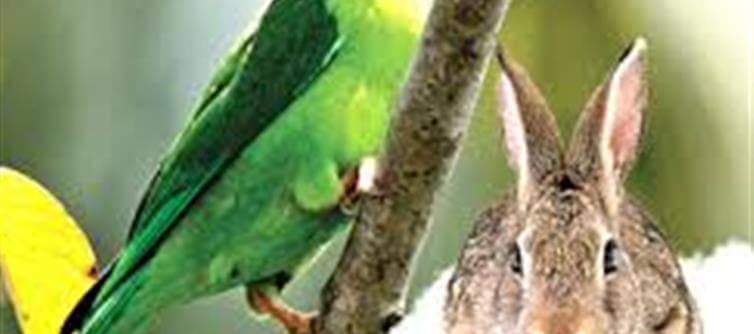
Parrots and rabbits have evolved remarkable visual adaptations that allow them to see behind themselves without turning their heads. This ability is primarily due to the unique placement of their eyes and the expansive field of vision it provides.
In parrots, the eyes are positioned high and laterally on the skull, granting them a broad visual field. This placement enables parrots to see from just below their bill tip, over the top of their head, and quite far behind without moving their heads. Such a wide field of view is advantageous for detecting predators and navigating complex environments.
Rabbits, on the other hand, have eyes located on the sides of their heads, providing nearly a 360-degree field of vision. This panoramic view allows them to detect threats from almost any direction, a crucial adaptation for prey animals. However, this eye placement results in a small blind spot directly in front of their nose, which they compensate for using their keen sense of smell and tactile whiskers.
These visual adaptations in both parrots and rabbits are evolutionary responses to their respective ecological niches. For parrots, the ability to monitor their surroundings aids in social interactions and predator avoidance in arboreal habitats. For rabbits, a wide field of vision is essential for early predator detection in open environments.
In summary, the strategic positioning of the eyes in parrots and rabbits grants them an extensive field of vision, allowing them to see behind without turning their heads. This adaptation enhances their ability to detect predators and navigate their environments effectively..jpg)




 click and follow Indiaherald WhatsApp channel
click and follow Indiaherald WhatsApp channel